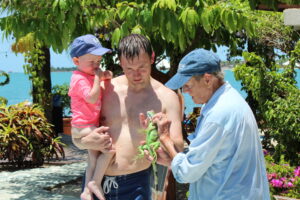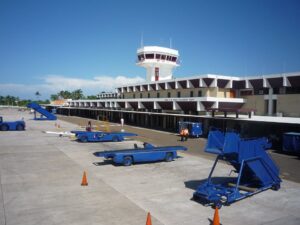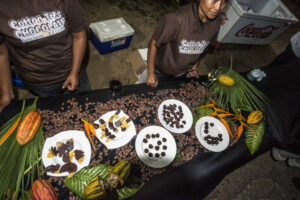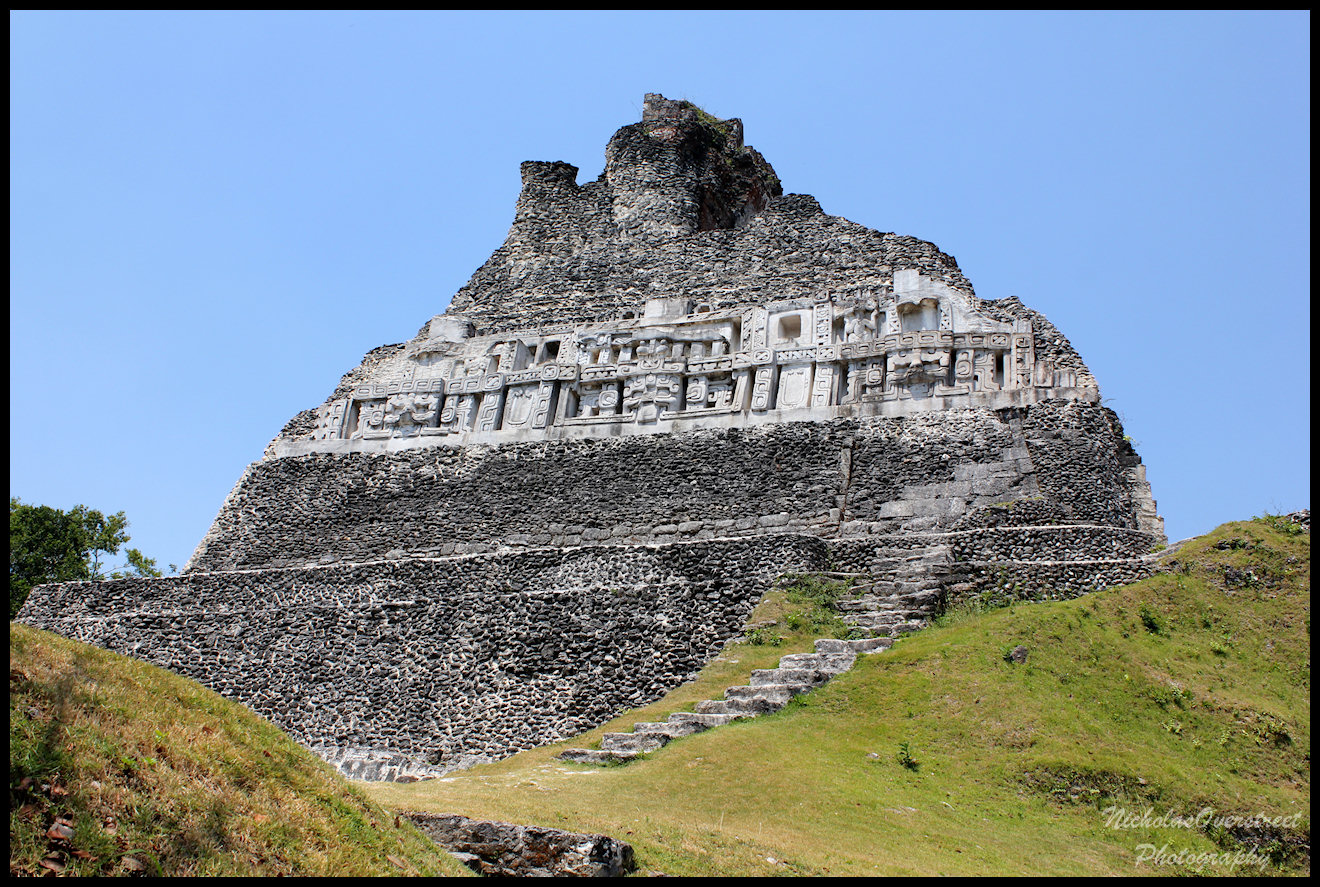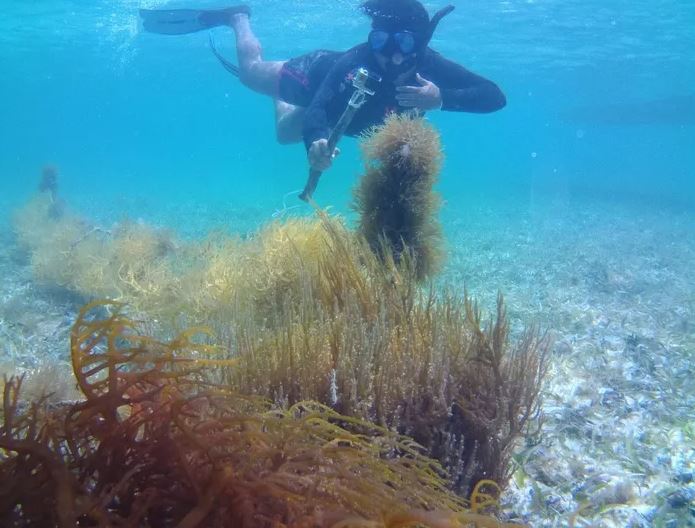
Sustainable seaweed farming is the next big thing in the quiet fishing village of Placencia, and as was recently highlighted by Smithsonian Magazine, residents of the tiny fishing village are wasting no time in reaping the benefits that it offers for humans, habitat, and hair in Belize.
The Washington-based magazine, which covers history, science arts, and nature stories across the globe published an article this week in their magazine and told the story of how seaweed is bringing a Belizean community together to explore its potential, from sustaining their local environment and economy to helping them care for their natural hair.
The story specifically followed the life of locals, pioneer seaweed farmer and founder of Placencia Producers Cooperative Lowell Godfrey, and Placencia woman Jolie Pollard, a young Belizean entrepreneur who grew up savoring the rich delicacy of seaweed shakes, that was mixed with love by her grandfather, a local fisherman himself. Growing up in Placencia, Pollard was only too familiar with the health and environmental benefits of seaweed. However as the story goes, when she was fully grown, Pollard then got to witness the financial benefits of seaweed as well through the guidance of Godfrey who founded the first-ever seaweed farm in Little Water Caye.
Godfrey, whose seaweed cooperative has now grown to one of the biggest in the country, according to the magazine, would tell, ” anyone who would listen about the benefits of the aquatic algae – from capturing carbon to fighting climate change, to acting as a nursery for juvenile marine life.” Being a former fisherman, Godfrey would educate residents on how seaweeds provide shelters for aquatic critters and would even serve to assist the Placencia community to replenish their dwindling fishing stocks. The article sites that at that time, rising fuel prices, and the cost of living were driving local fishermen to resort to fishing as a last resort. The restaurants on the 16-mile peninsula were suffering from a scarcity of products.
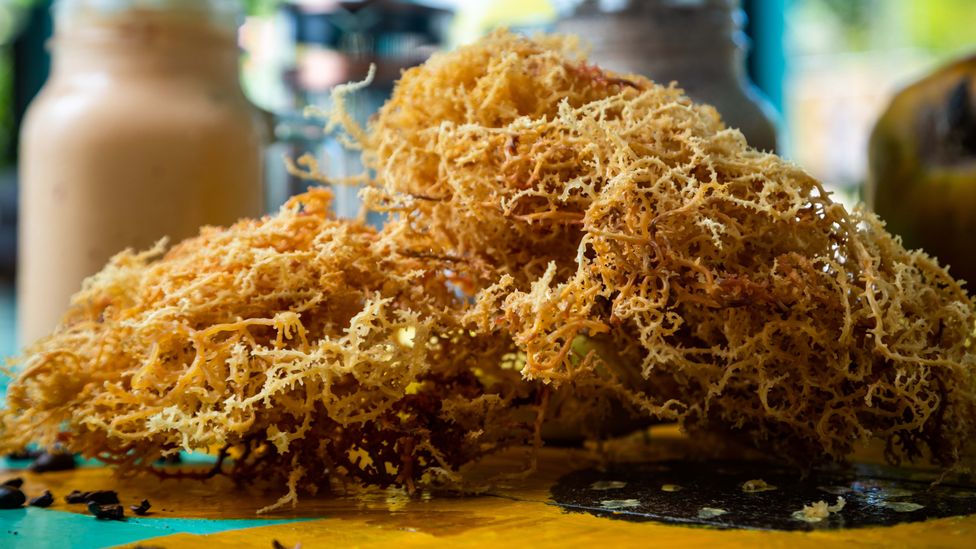
That is where Godfrey and his environmentally conscious seaweed farming off of Placencia’s coast came in. He educated residents on how seaweed farming would be a great alternative to solve the fishing problem while providing residents with a sense of ownership over the local economy. Apart from fishing and tourism, Godfrey told residents that seaweed farming would provide locals with an additional sustainable and profitable source of income.
Godfrey is said to have demonstrated to residents how to suspend ropes between floating buoys, then attach fragments of seaweed between the strands to help them grow. Within three months, each rope would yield nearly 30lbs of seaweed. Together Godfrey and his team would then harvest the seaweed, which they would then put out to dry naturally in the sun, and then vacuum seal them so that they could sell them at a local coop.
The dried and packaged seaweed would then be exported out of the country or purchased by the local restaurants or even locals to mix delicious seaweed shakes infused with brandy, sugar, and spices. [The seaweed shake is a local drink that is enjoyed by tourists due to its rich protein and dietary fiber, as well as minerals like potassium, magnesium, iron, zinc, and selenium].
But while seaweed farming in Belize is taking care of humans and habitats, in Pollard’s case her experiment with seaweed in her natural hair sparked an entire hair care business for curly beauties in Belize and across the world. It birthed the Ikooma, a haircare brand, which is the kriolozed name for the ”Eucheuma Isiforme” seaweed. Pollards moisturizing seaweed hair cream and seaweed cream-gel is a favorite among local Belizean girls who find it a task to tame their curly mane in the hot tropical climate.
What’s more is that Pollard purchases her seaweed directly from the Placencia Producers Cooperative, in an effort to circulate local currencies in her small village.
“I’m excited to show people the benefits that seaweed can offer. Both as a business owner that uses it in my own product,” Pollard says, “but also as a member of a community that could really benefit from its economic potential without compromising our local environment, Pollard told Smithsonian Magazine.

We here at Chabil Mar, being sons and daughters of the Placencia community, are only too aware of how important the local community and business along the Placencia coast depend on the protection of our natural resources and marine life. Situated just a short walk from Placencia Village, we are the perfect vacation option for guests who are interested in visiting Placencia to learn more about its people and their efforts in sustainable seaweed farming.
Our location on the coast also positions us in the right place for visitors to appreciate the natural wonders of our country’s beautiful coastline. You can also book local tours in Placencia Village that will take you out at sea to appreciate the diversity of Belize’s marine life via snorkeling, sailing, and diving tours. You can even take strolls on the beach down to the village to get a glimpse of local fishermen, artists, arts, and many more local attractions. Whether you choose to stay in and enjoy our spacious grounds equipped with private pools and amazing views you definitely won’t regret vacationing at Chabil Mar.
Visit our website for more information on Placencia and Belize, or send us an email, to book your stay today. You can also read more of the article at this link.





